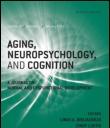| aging, neuropsychology, and cognition 期刊指南(中文版) | |

(3)
对我有用 |
期刊简介 The purposes of Aging, Neuropsychology, and Cognition are to (a) publish research on both the normal and dysfunctional aspects of cognitive development in adulthood and aging, and (b) promote the integration of theories, methods, and research findings between the fields of cognitive gerontology and neuropsychology. The primary emphasis of the journal is to publish original empirical research. Occasionally, theoretical or methodological papers, critical reviews of a content area, or theoretically relevant case studies will also be published. Emphases of interest include information processing mechanisms, intellectual abilities, the impact of injury or disease on performance, cognitive training, cognitive and pharmacological approaches to treatment and rehabilitation, metacognition, and the social and personal aspects of cognitive functioning. Articles on both normal and dysfunctional development that are relevant to the interface between cognitive gerontology and neuropsychology are particularly welcome. Multiple approaches to issues of aging and cognition (e.g., basic, applied, clinical), and multiple methodologies (e.g., cross-sectional, longitudinal, experimental, multivariate correlation) are appropriate. 原文地址http://www.tandfonline.com/action/authorSubmission?journalCo... |